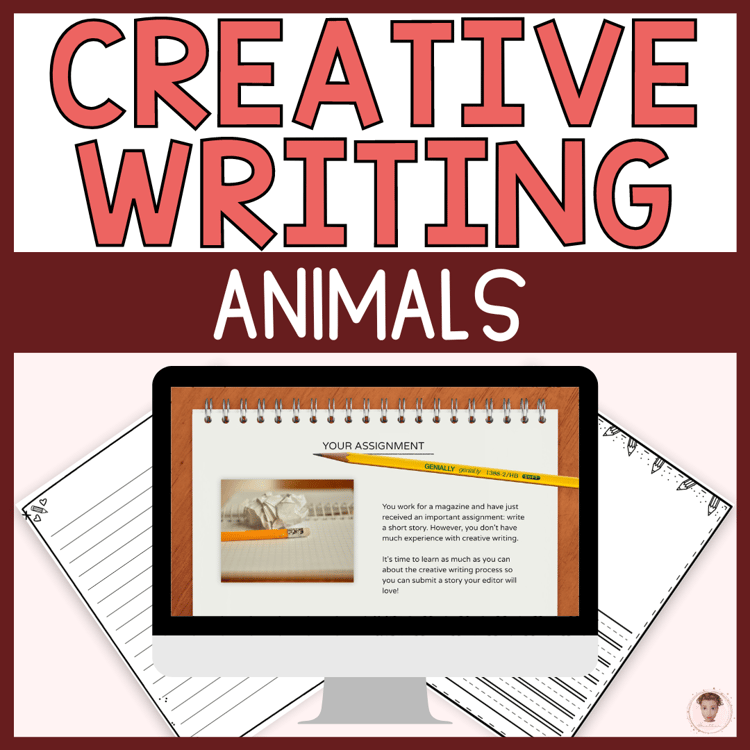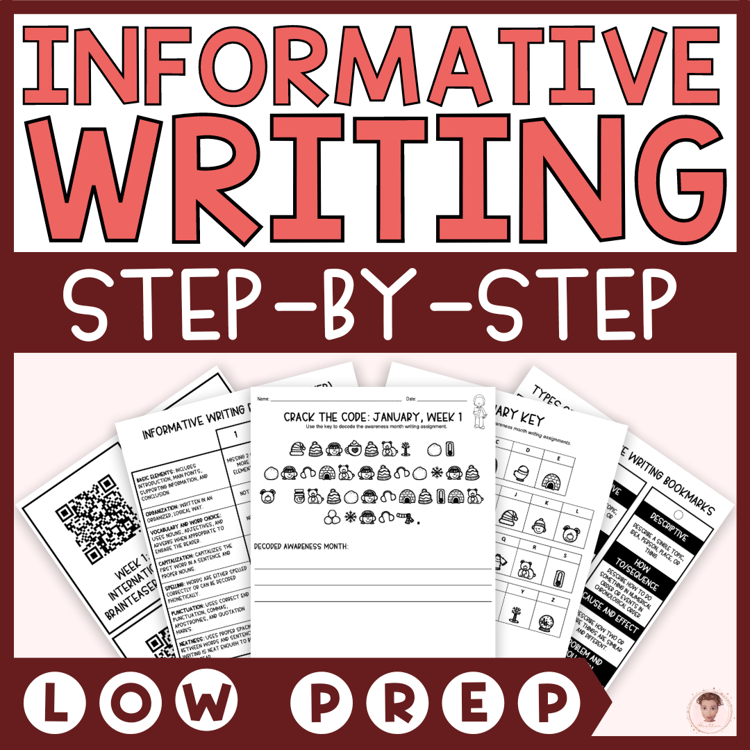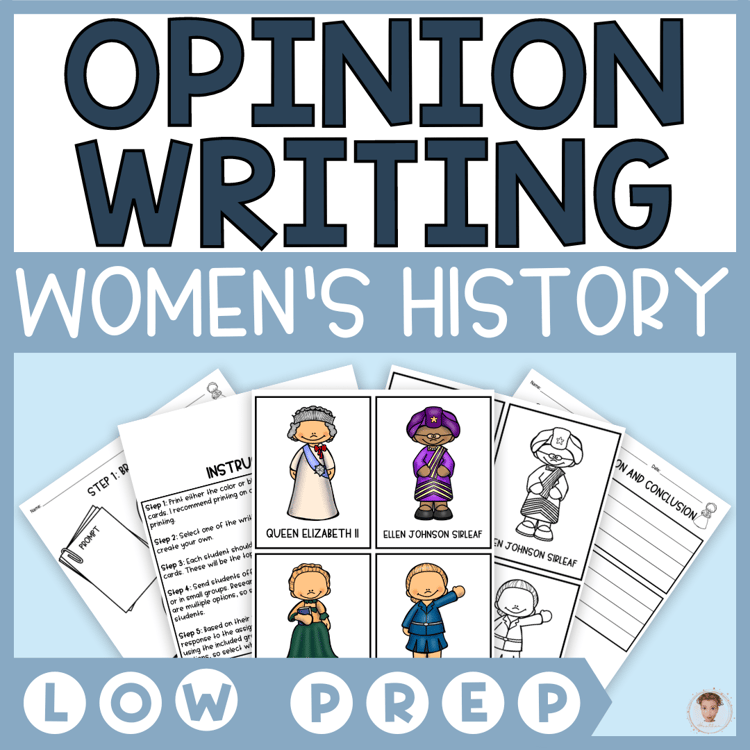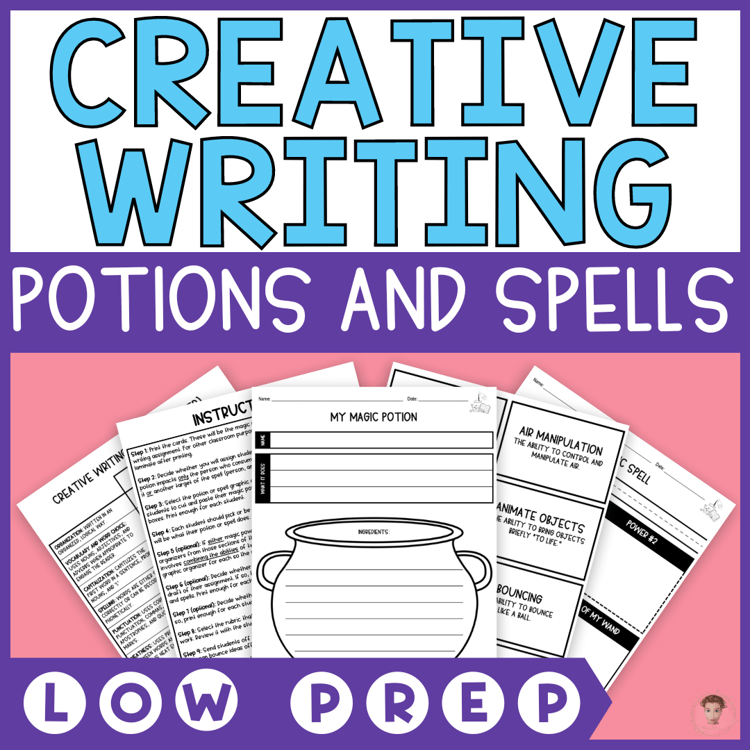Writing is an essential skill that all students need to develop to succeed in school and beyond. However, for many young learners, writing can be a daunting task that triggers feelings of fear and anxiety. As educators, it's our mission to help these reluctant writers discover the joy and benefits of expressing themselves through the written word.
Let's explore various approaches to transforming writing from a daunting task into an exciting adventure for young learners.
Creating a Safe and Supportive Environment
A positive and nurturing environment is essential for fostering a love of writing among young learners. Here are some ways to create a safe and supportive space that encourages reluctant writers to express themselves freely and confidently:
Encourage a positive attitude toward writing:
- Reinforce the idea that everyone has unique stories and ideas to share.
- Emphasize the process of learning and growing as a writer over perfection.
- Celebrate progress and effort, regardless of the final outcome.
Offer constructive feedback:
- Focus on providing specific, actionable feedback that helps students improve their writing.
- Balance praise with constructive criticism, highlighting both strengths and areas for growth.
- Encourage students to see feedback as an opportunity for learning and development rather than a judgment of their abilities.
Build a sense of community among students:
- Foster a culture of respect and support where students feel comfortable sharing their work with one another.
- Encourage collaboration and teamwork, emphasizing the importance of learning from peers.
- Implement group activities and discussions that allow students to share their ideas and experiences.
Celebrate writing achievements:
- Recognize and praise individual accomplishments, such as completing a writing project or overcoming a specific challenge.
- Create opportunities for students to showcase their work within the classroom or to a broader audience.
- Share success stories and personal growth, helping students see their progress and inspiring them to continue their writing journey.
Using Fun and Engaging Writing Prompts
One of the keys to inspiring reluctant writers is to provide them with writing prompts that spark their interest and stimulate their imagination. Here are some strategies for creating fun and engaging prompts that will encourage students to put pen to paper:
Personalize prompts based on student interests:
- Learn about your students' hobbies, passions, and favorite subjects.
- Tailor writing prompts to incorporate these interests, making writing more relevant and enjoyable for each student.
- Allow students to suggest writing prompts or topics, fostering a sense of ownership and motivation.
Introduce creative and imaginative prompts:
- Use open-ended questions and scenarios that inspire students to think outside the box.
- Encourage students to explore different perspectives, settings, and characters in their writing.
- Provide prompts that inspire curiosity and wonder, such as "What if?" or "Imagine a world where…".
Incorporate visual aids, such as pictures or videos:
- Use images, photographs, or short video clips to spark ideas and engage visual learners.
- Encourage students to create stories or descriptions based on these visual prompts.
- Allow students to select their own images as a starting point for their writing.
Use prompts from different genres to broaden their writing experiences:
- Introduce a variety of writing styles, such as descriptive, narrative, persuasive, or expository.
- Provide prompts that allow students to experiment with different formats, like letters, diary entries, or news articles.
- Encourage students to explore literary genres like mystery, science fiction, or fantasy.
Incorporating Technology
Today's technology offers many opportunities to make writing more engaging and accessible for reluctant writers. Here are some ways to integrate technology into your writing instruction:
Utilize digital storytelling platforms:
- Introduce students to digital storytelling tools like BoomWriter, Storybird, Book Creator, or StoryJumper.
- Encourage students to create and share their stories using these platforms, incorporating multimedia elements such as images, audio, or video.
- Use digital stories as a springboard for discussions, reflections, and peer feedback.
Explore educational writing apps and websites:
- Introduce students to age-appropriate writing apps, like Grammarly, Hemingway, or Write About This.
- Allow students to use these tools to develop and refine their writing skills, from brainstorming ideas to editing and revising their work.
- Evaluate the effectiveness of these tools and adjust their use based on student needs and progress.
Encourage collaborative writing with online tools:
- Use collaborative writing platforms like Google Docs or Microsoft OneDrive to facilitate group writing projects.
- Encourage students to work together in real-time, sharing ideas, providing feedback, and editing each other's work.
- Develop a sense of accountability and teamwork through shared writing experiences.
Showcase students' writing through blogs or digital portfolios:
- Create a class blog or website where students can publish their work, sharing it with a broader audience.
- Encourage students to build digital portfolios, showcasing their growth and achievements as writers.
- Use digital platforms to facilitate discussions and reflections. Remember to teach students about digital citizenship and responsible online behavior when sharing their work and engaging with others!
Encouraging Collaboration and Peer Feedback
When students work together and learn from each other, they can develop their writing skills more effectively and gain confidence in their abilities. Here are some strategies for encouraging collaboration and peer feedback in your writing instruction:
Implement writing groups or partnerships:
- Organize students into small groups or pairs, allowing them to work together on writing tasks and share ideas.
- Rotate partners or group members regularly to expose students to different perspectives and writing styles.
- Provide clear guidelines and expectations for respectful collaboration and communication.
Organize peer review sessions:
- Teach students how to give constructive feedback, focusing on specific aspects of their peers' writing, such as content, organization, or grammar.
- Create a structured peer review process with rubrics or checklists to guide students' evaluations.
- Encourage students to revise their work based on the feedback they receive, emphasizing the importance of reflection and improvement.
Facilitate group writing projects:
- Assign collaborative writing tasks, such as co-authoring a story or writing a script for a play or video.
- Encourage students to divide responsibilities and work together to develop their ideas, characters, and plotlines.
- Provide opportunities for students to present their group projects to the class, celebrating their teamwork and creativity.
Share writing samples for inspiration and learning:
- Provide examples of peer writing to demonstrate various writing techniques and styles.
- Discuss the strengths and areas for improvement in these samples as a class, fostering a culture of learning and growth.
- Encourage students to reflect on the writing samples and apply the lessons learned to their work.
Introducing Writing Games and Activities
Injecting fun, engaging writing games and activities can motivate students to explore their creativity and build their writing skills in a playful, low-pressure environment. Here are some writing games and activities that can energize your students and inspire them to write:
Play writing games that foster creativity and imagination:
- Storytelling Chain: Have students take turns adding a sentence to a collaborative story, challenging them to build on each other's ideas.
- Three-Word Story: Provide three random words and ask students to create a short story or scene that incorporates all of them.
- Story Cubes: Use story cubes or create your own with images or prompts, and have students roll them to generate ideas for their writing.
Explore story-building activities with prompts and constraints:
- Six-Word Stories: Challenge students to write a complete story in just six words, inspired by Ernest Hemingway's famous example.
- Alphabet Story: Ask students to write a story where each sentence begins with the next letter of the alphabet.
- Five-Minute Fiction: Give students a prompt and set a five-minute timer, encouraging them to write as much as possible within the time limit.
Use word and sentence challenges to promote language skills:
- Word Ladder: Provide a list of words and have students create a story using each word in the order provided.
- Synonym Stretch: Challenge students to rewrite a sentence, replacing as many words as possible with synonyms without changing the meaning.
- Silly Sentence Swap: Have students trade sentences with a partner and ask them to rewrite the sentence in a humorous or unexpected way.
Implement role-playing activities to develop storytelling abilities:
- Character Hot Seat: Invite students to assume the role of a character from a story and answer questions from their peers.
- Storytelling Relay: Assign different parts of a story to groups of students and have them act out their section before passing it on to the next group.
- Dialogue Skits: Encourage students to write short dialogues between characters and perform them in front of the class.
Connecting Writing to the Real World
Making connections between writing and everyday life and different jobs can help students see how important it is to improve their writing skills. Here are some strategies for making writing more meaningful and engaging for your students:
Discuss the role of writing in various professions:
- Highlight careers that involve writing, such as journalism, advertising, or technical writing, to demonstrate the broad range of opportunities for skilled writers.
- Discuss how effective written communication is essential in many fields, even those not primarily focused on writing.
- Share examples of writing in different professional contexts, such as business letters, reports, or scientific articles.
Invite guest speakers to share their writing experiences:
- Arrange for professionals who use writing in their careers to visit the classroom or participate in virtual sessions, providing students with real-life insights.
- Encourage guest speakers to discuss the importance of writing in their work and share personal anecdotes about their writing journey.
- Prepare students to ask thoughtful questions and engage in meaningful discussions with the guest speakers.
Encourage students to write for authentic audiences (e.g., letters to local newspapers):
- Provide opportunities for students to write for a real purpose, such as submitting letters to the editor or writing articles for a local newsletter.
- Engage students in community projects that involve writing, like creating brochures for a local nonprofit or composing thank-you letters to local heroes.
- Discuss the impact and power of writing as a tool for advocacy, change, and expression in the real world.
Plan field trips to writing-related locations, such as libraries or publishing houses:
- Organize visits to local libraries, bookstores, newspapers, or other writing-focused venues to expose students to the world of professional writing.
- Arrange for guided tours or presentations that highlight the writing process, from idea generation to publication.
- Encourage students to reflect on their experiences and consider how they might apply what they've learned to their writing.
Incorporating Multimodal and Interdisciplinary Writing Projects
By combining different ways of communicating and fields of study, you can encourage a more well-rounded approach to writing that appeals to a broader range of interests and ways of learning. Here are some strategies for incorporating multimodal and interdisciplinary writing projects into your instruction:
Combine writing with visual arts:
- Encourage students to illustrate their stories or create comic strips, allowing them to express their ideas through text and images.
- Integrate writing projects with art lessons, such as having students write descriptive paragraphs inspired by famous paintings or create artwork to accompany their writing.
- Organize collaborative projects where students work in pairs or small groups to combine their writing and artistic skills, producing a final product that showcases both talents.
Blend writing with technology and digital media:
- Assign multimedia projects, such as creating digital stories, podcasts, or videos incorporating written scripts, voiceovers, or captions.
- Have students design and write content for their own websites, blogs, or social media profiles, teaching them digital literacy and online communication skills.
- Encourage students to explore various digital tools and platforms to present their writing in innovative ways, such as interactive eBooks, infographics, or slideshows.
Integrate writing with science and math:
- Encourage students to write science fiction stories based on real scientific concepts, fostering creativity while deepening their understanding of scientific principles.
- Have students create word problems, journals, or explanations for math concepts, using writing as a tool to reinforce their mathematical understanding.
- Assign research projects that require students to investigate scientific or mathematical topics, developing their research and writing skills while exploring their interests.
Connect writing to social studies and history:
- Ask students to write historical fiction or create diary entries from the perspective of a historical figure, building empathy and understanding of past events.
- Encourage students to research and write about current events or social issues, helping them develop their critical thinking and analytical writing skills.
- Assign creative projects, such as designing a travel brochure for a historical destination or writing a persuasive speech on a social issue, that require students to apply their social studies knowledge in a written format.
Providing Opportunities for Choice and Autonomy
When students feel a sense of ownership over their work, they are likelier to take risks, experiment with new ideas, and develop unique writing styles. Here are some strategies for providing opportunities for choice and autonomy in your writing instruction:
Offer a variety of writing prompts and topics:
- Provide students with multiple writing prompts or topics, ensuring a diverse range of options catering to different interests and preferences.
- Encourage students to suggest their own prompts or topics, allowing them to pursue their passions and ideas.
- Create a "writing menu" or choice board with various writing tasks and genres, allowing students to select the options that appeal to them most.
Allow students to choose their preferred writing format and style:
- Encourage students to experiment with different writing formats, such as poetry, essays, letters, or short stories, and choose the one that suits them best.
- Give students the flexibility to adapt their writing style to their unique voice and personality, fostering creativity and self-expression.
- Provide opportunities for students to explore various literary genres, such as fantasy, science fiction, or mystery, and select the ones they find most engaging.
Encourage student-directed writing projects:
- Assign long-term writing projects that allow students to choose their topic, audience, and purpose, enabling them to take ownership of their work from start to finish.
- Offer guidance and support throughout the project, but let students make decisions about the direction and scope of their writing.
- Celebrate students' achievements and growth throughout the project, acknowledging their efforts and creative choices.
Support self-assessment and goal-setting:
- Teach students how to assess their writing, identifying strengths and areas for improvement.
- Encourage students to set personal writing goals, such as improving their vocabulary, mastering a particular writing technique, or experimenting with a new genre.
- Provide ongoing feedback and support to help students track their progress toward their goals and celebrate their successes.
Celebrating and Sharing Student Writing
By creating opportunities for students to share their work with others, you can help them take pride in their achievements and gain valuable feedback from their peers, teachers, and the broader community. Here are some strategies for celebrating and sharing student writing:
Organize writing showcases and events:
- Plan classroom events, such as author's teas or open mic sessions, where students can read or present their work to classmates, parents, or guests.
- Collaborate with other teachers to host a school-wide writing celebration or contest, recognizing the outstanding work of students across grade levels.
- Submit student work to local or national writing competitions, providing a platform for students to receive recognition and feedback from a larger audience.
Create opportunities for peer recognition and feedback:
- Establish a system for students to share their work with classmates, such as a "writing wall" or a class blog, where they can post their stories, essays, or poems.
- Encourage students to offer positive feedback and constructive criticism to their peers, fostering a supportive and respectful writing community.
- Organize peer-led writing workshops where students can collaborate, share ideas, and learn from one another's writing experiences.
Publish and display student work:
- Compile a class anthology, newsletter, or magazine that features students' writing, providing them with a tangible record of their accomplishments.
- Encourage students to submit their work to school or local publications, helping them gain exposure and recognition for their writing efforts.
- Display students' writing throughout the classroom or school, showcasing their achievements and inspiring other students to engage in the writing process.
Communicate and celebrate student progress:
- Share student writing successes and growth with parents and guardians, reinforcing the value of writing and the importance of celebrating students' accomplishments.
- Highlight the progress of reluctant writers by showcasing their improvements over time, acknowledging their hard work and dedication.
- Encourage students to reflect on their writing journey and recognize their growth, fostering pride and accomplishment.
Providing Access to Mentor Texts and Authors
By studying the work of accomplished authors, students can learn valuable writing techniques, discover different writing styles, and find inspiration for their writing. Here are some strategies for giving your students access to mentor texts and authors:
Integrate mentor texts into writing lessons:
- Select high-quality, age-appropriate mentor texts from a variety of genres and styles, ensuring a diverse range of voices and perspectives.
- Analyze mentor texts with your students, discussing the author's craft, writing techniques, and stylistic choices and encouraging students to apply these techniques to their writing.
- Use mentor texts to demonstrate specific writing skills, such as creating vivid descriptions, building suspense, or developing compelling characters.
Organize author visits and workshops:
- Invite local authors or arrange for virtual author visits, allowing students to learn from professional writers and gain insights into their creative process.
- Encourage authors to share their writing journey, including their struggles, successes, and tips for overcoming writer's block or other challenges.
- Have authors lead writing workshops or provide feedback on student work, allowing students to learn directly from accomplished writers.
Establish a classroom library or reading corner:
- Create a dedicated space in your classroom where students can explore a variety of books, including mentor texts and works by their favorite authors.
- Regularly update and refresh your classroom library, ensuring it represents a diverse range of authors, genres, and topics catering to different interests and reading levels.
- Encourage students to recommend books to their peers, fostering a love of reading and a sense of community around the shared experience of literature.
Encourage students to learn from and emulate their favorite authors:
- Have students research their favorite authors, exploring their writing styles, techniques, and creative processes.
- Assign writing activities that encourage students to experiment with their favorite authors' writing styles or techniques, helping them develop their own unique voice.
- Create opportunities for students to share their favorite authors and books with the class, fostering a culture of reading and appreciation for quality writing.
Encouraging Reflection and Growth
By creating opportunities for students to reflect on their writing experiences, challenges, and accomplishments, you can help them recognize their progress, learn from their mistakes, and celebrate their growth as writers. Here are some strategies for encouraging reflection and growth in your writing instruction:
Implement regular reflection activities:
- Assign journal entries or writing prompts that encourage students to reflect on their writing experiences, challenges, and successes.
- Schedule regular check-ins or conferences with students to discuss their progress, goals, and areas for improvement, providing guidance and support as needed.
- Encourage students to review and revise their previous work, identifying opportunities for growth and recognizing the improvements they've made over time.
Foster a growth mindset in the classroom:
- Teach students about the concept of a growth mindset, emphasizing that writing skills can be developed and improved through practice, effort, and persistence.
- Encourage students to view challenges and setbacks as learning opportunities, helping them reframe their thinking and build resilience.
- Celebrate progress and effort rather than just final outcomes, reinforcing the importance of the writing process and the value of perseverance.
Create opportunities for peer reflection and feedback:
- Organize writing workshops or peer-review sessions where students can share their work, receive feedback, and reflect on their writing process with their classmates.
- Encourage students to offer constructive criticism and positive reinforcement to their peers, fostering a supportive and collaborative writing community.
- Provide guidelines and training for students on giving effective feedback, ensuring that peer reflection is beneficial and meaningful for all participants.
Encourage self-assessment and goal-setting:
- Teach students to evaluate their own writing, identifying strengths, areas for improvement, and specific goals for future growth.
- Provide tools and resources, such as rubrics or self-assessment checklists, to help students effectively assess their work and set realistic goals.
- Regularly revisit and update goals, helping students track their progress and celebrate their achievements along their writing journey.
Conclusion
Helping reluctant young writers get excited about writing can be challenging yet rewarding. Using these strategies and encouraging a love of writing in the classroom, we can help our students become skilled, creative, and confident--ready to share their unique voices with the world.






